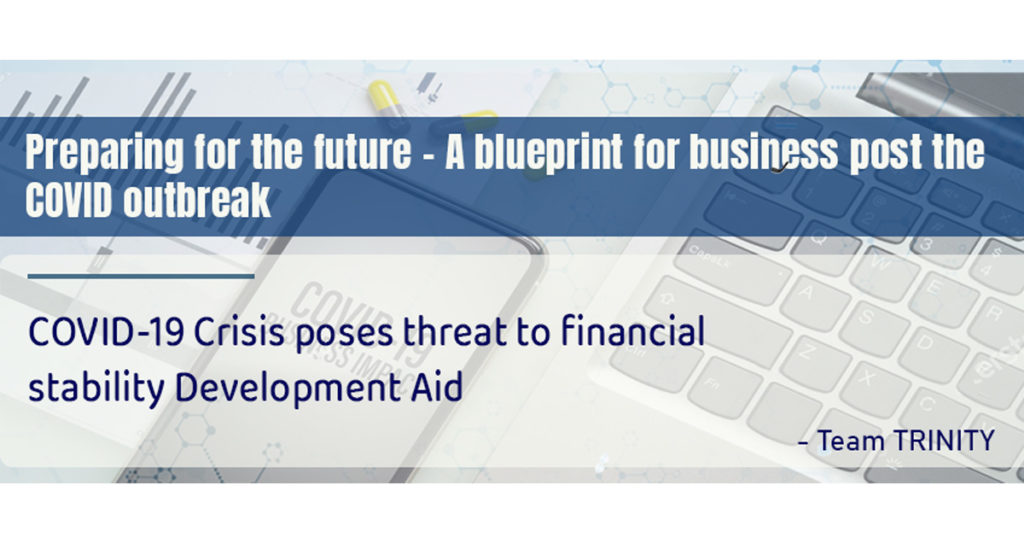
Introduction:
The sudden Coronavirus Outbreak has swept the globe and caught everyone unaware. Governments,businesses, thinkers, economists, healthcare specialists and virtually everyone in a decision-making capacity has been totally unprepared to face the magnitude of this calamity. We will not go into the aspects of the outbreak and how it is unfolding; nor is it the intention here to predict outcomes, as there is ample information, (probably too much) available on a daily basis, and as far as the future is concerned
we will not presume to be experts in reading that either.
The purpose of this article is to evaluate the various probable scenarios, and to understand the tools required to help the business survive through the worst phase, thereby building the platform to thrive and flourish when things come back to normal, as they inevitably will.
It is our firm belief that those companies which are the best prepared will flourish, and those that don’t,
will flounder.
Individual Behaviours and Outcomes:
Everything which happens is generally an external event, which means external to the individual. The coronavirus pandemic is an example. Same could be said of events such as 9/11, the 2008 financial crisis, wars, political instability, tsunamis and earthquakes etc. All such events are capable of disrupting the economy and quality of life of each and every one of us. It is very natural to react to these external events and take our decisions in a reactive way to the external events and circumstances. These decisions and the actions resulting thereof are likely to be panic driven and would therefore have a high probability of resulting in catastrophe. Or the event could lead to a total freezing up, and inability to take the decisions required; this would be equally devastating.
It therefore makes eminent sense to evaluate the situation internally, and then take action. The way to do this is to look at the situation from a personal viewpoint, and then take proactive action. This means we now take positive action instead of a panic driven reactive action.
The power of Collaboration and Co-operation:
Take help, and forge partnerships to complement each other and overcome the difficult situation. This is especially important for small companies, as joint pooling of resources and strengths can be vital in surviving the immediate fallout of the crisis.
Possibilities for the next 2 years:
There will be three phases in the economy and for businesses over the next couple of years:Phase I : This will be the most critical phase, where businesses and companies will be focused purely on survival. This phase could be over by July or August 2020 (most optimistic probability), December 2020 (conservative probability) or April 2021 (most pessimistic probability). In this phase, the priority for all companies will be to conserve the available resources like cash and material. It is vital not to increase debt beyond healthy limits, and hence, expenses should be severely controlled to include below:
| CRITICAL EXPENSES Those which cannot be avoided or delayed. |
| NON-CRITICAL EXPENSES What to do? *** At every stage ask the following questions: ✓ Is this expense required to be done immediately? If not, can it be delayed? By how long? ✓ Can the expense be totally avoided?
This is going to be extremely difficult, especially for businesses such as airline, hospitality and real estate, and other such industries in the service sector. As we will see ahead, good times will come, and at that time, it will be difficult or nearly impossible to get such good people back. ***Costs should be cut to the bare minimum.Options like unpaid leave, paid leave or salary cuts should be explored. In the worst viz. survival phase, cuts will be a certainty for most companies. These cuts should not be declared or imposed unilaterally; the management should take all players into confidence and assure them that this is the only choice available, in the immediate future for survival. Assurance should also be given that when things get better, they will get back those amounts over a period of time- the time period of course would depend on when and how things get back on track. Incentives and bonuses must be stopped or set aside till good times come. Capex projects should be on hold to ensure enough cash flows. |
In short, during phase one, survival and cash flow is the most critical aspect. Some companies may already be heavily in debt, and in this situation, may even have to take the bitter decisions such as layoff. It is vital in this phase to make a chart for critical and non-critical expenses, further categorized as expenses which can be reduced or at least postponed, and which cannot be reduced. Cash reserves if any should be monitored; extra funding should be arranged for, to account for expenses during lockdown and beyond. Make a comparison of expenses as a monthly, daily and annual trend. This kind of planning is very vital. Get a clear picture of accounts receivable, accounts payable and revenue projections. Adjust for cost savings which are being planned.
Based on this, a cash flow statement should be prepared on monthly basis for the entire survival phase, on optimistic as well as pessimistic basis. Any shortfall should be funded through loans or asset sale (if
any, and avoidable), or even equity dilution if the opportunity is available and is a financially better option. In short any and every option should be considered to stay afloat in the survival phase.
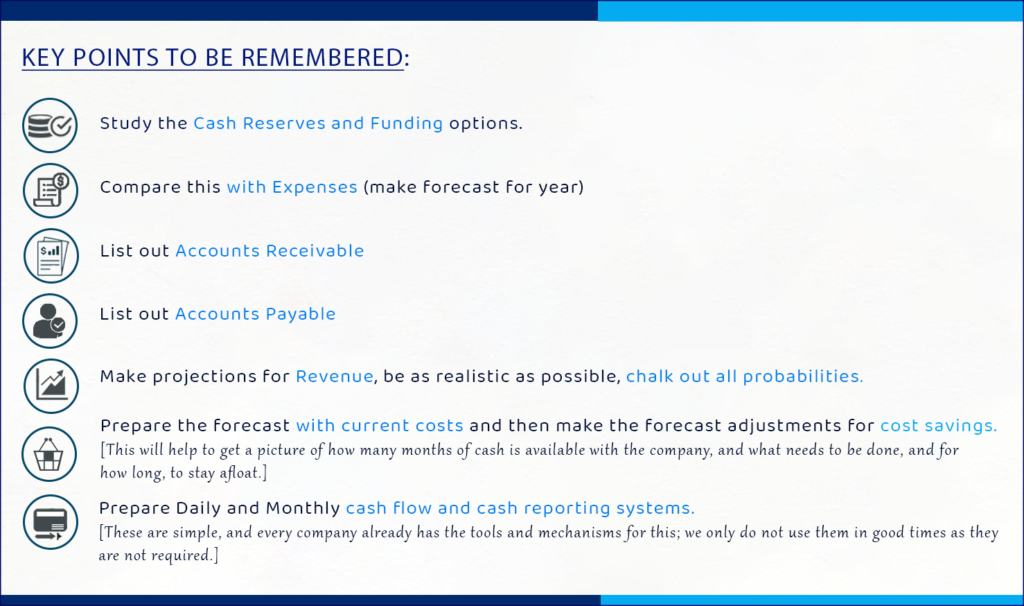
Business Challenges and Opportunities:
With the current global situation, customer needs are going to change
|
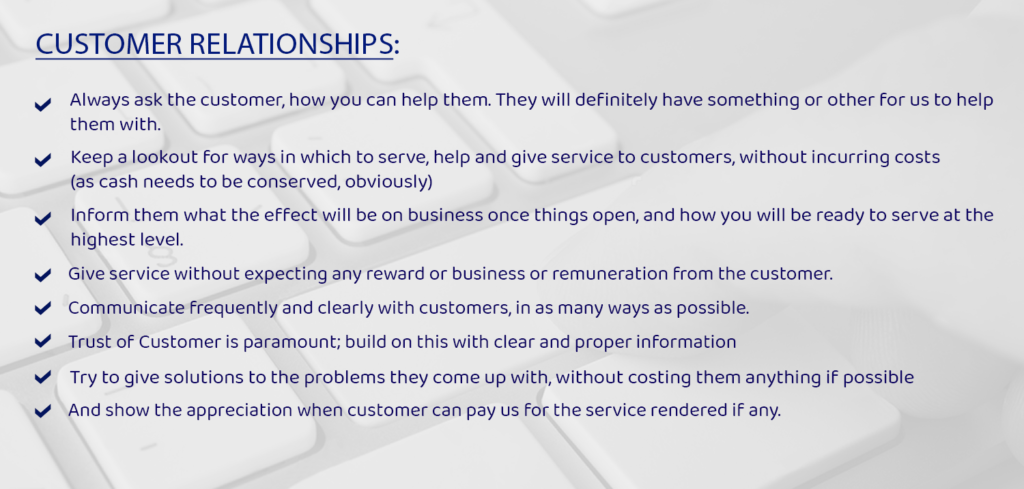
Opportunities to get revenue:
It is obvious that the core business is going to reduce, by some amount at least, and even drastically if things do not normalize soon.
What to do in this situation?
| *** To explore and outline all possibilities for increasing revenue from activities other than our core business. *** Give priorities to each of these activities. For example, if you are a company focused purely on product sales, try to identify services which you could offer such as:
*** Make an action plan for each activity planned and target a revenue for the same. *** Executing these plans will require proper system of setting goals and reviewing them.
|
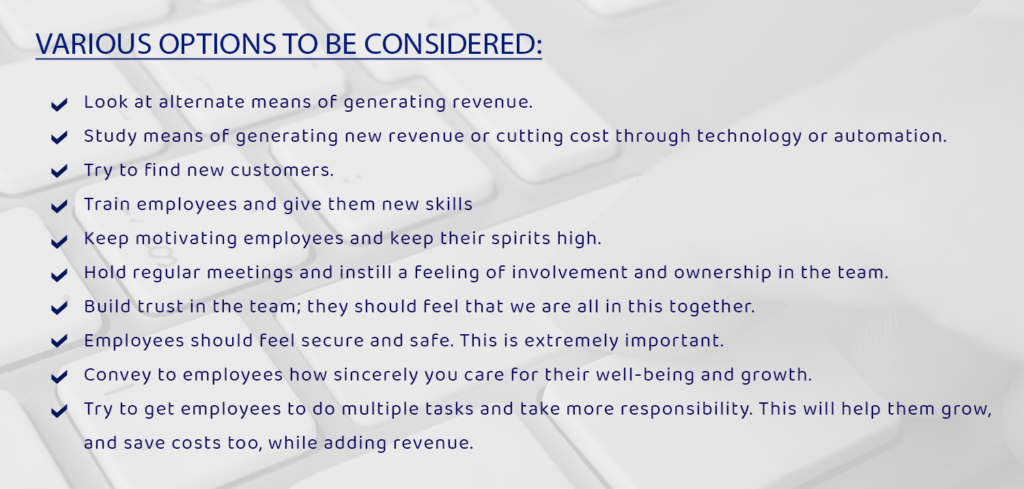
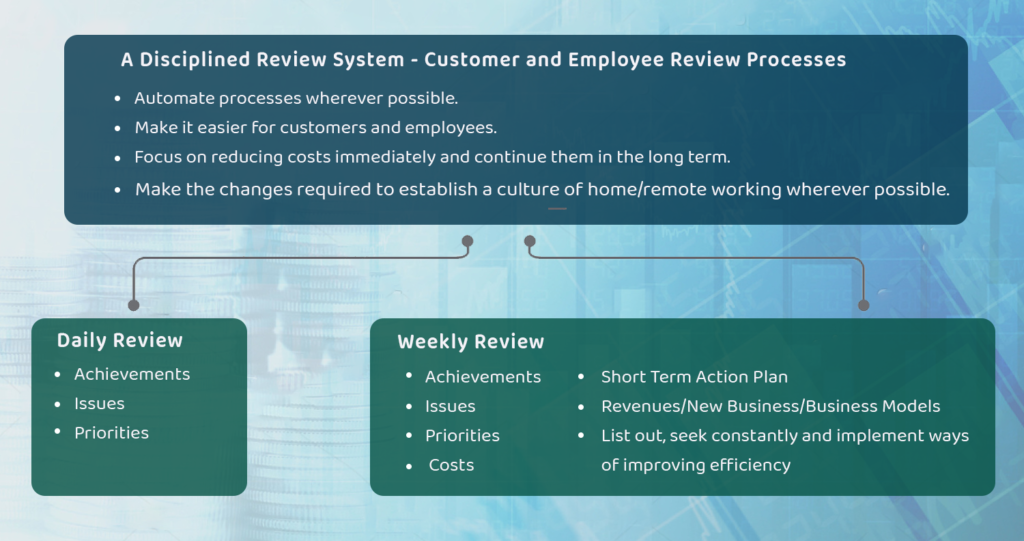
DO NOT STOP any of these activities:
Marketing:Look for low cost methods such as:
- Email Lists
- Social Media
- To the activity and demonstrate your expertise in all communications
- Always look for ways to keep selling – Even today, some people are buying!
- Help Customers find ways in which to conserve their own cash, and improve their cash flow; for example instead of selling your product (Capex) you could rent or lease it (Opex) thereby saving the customer cash, and increasing your long term revenue stream, profitability and engagement/relationship/loyalty with customer.
Planning for all scenarios
Make plans depending on various:
|
Find Yourself
|
| Plan for scenarios Based on all the above information and assumptions, plan for 3 scenarios:
|
Assign Probabilities:
Create a scenario for each probability
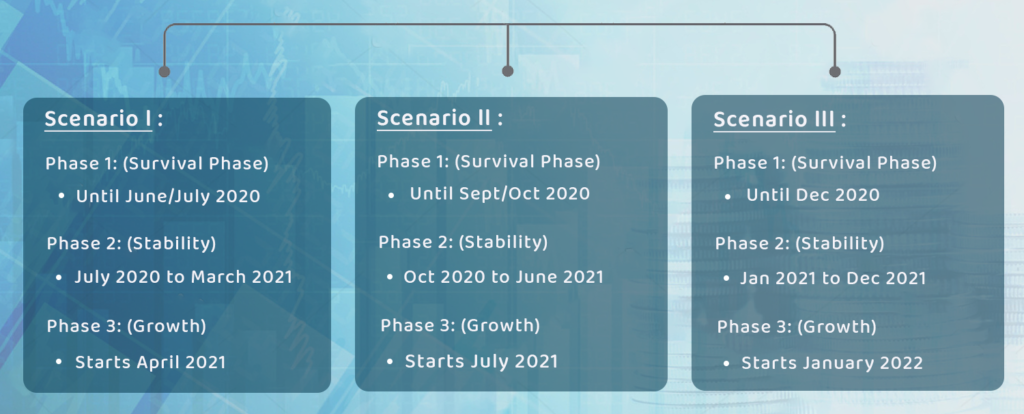
CONCLUSION:

If you wish to discuss anything related to this blog, please send your queries to
marketing@trinityenergy.co.in
Glad to hear from you!!







